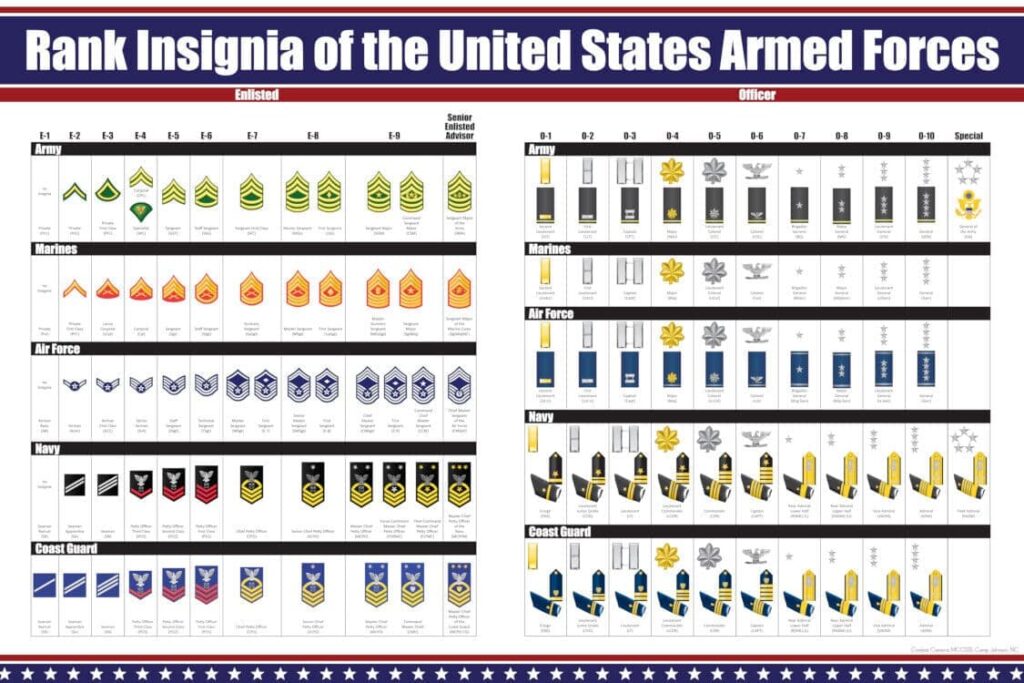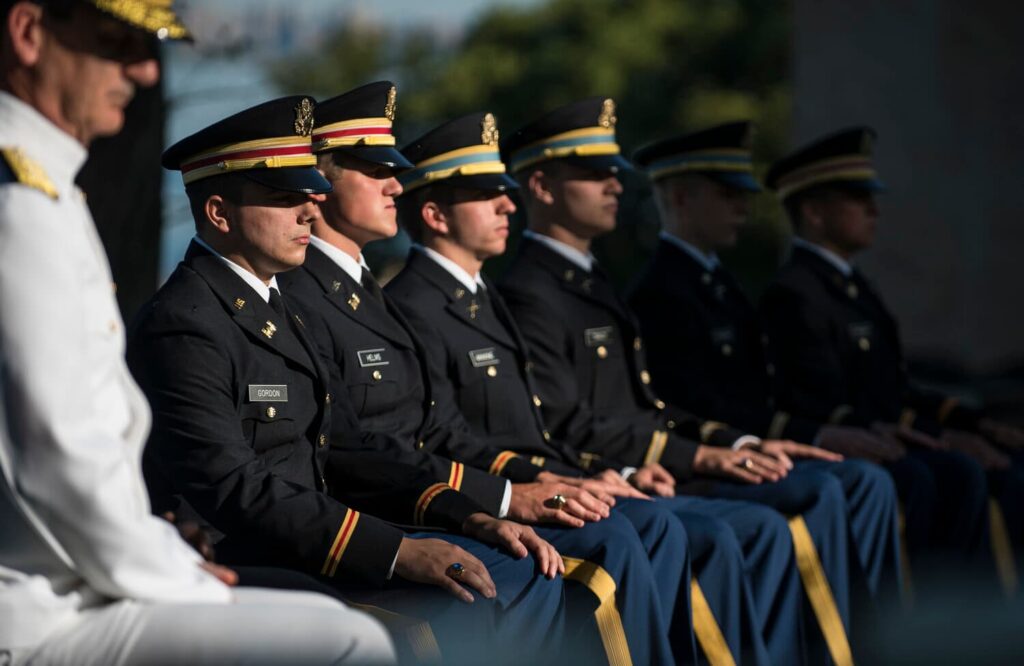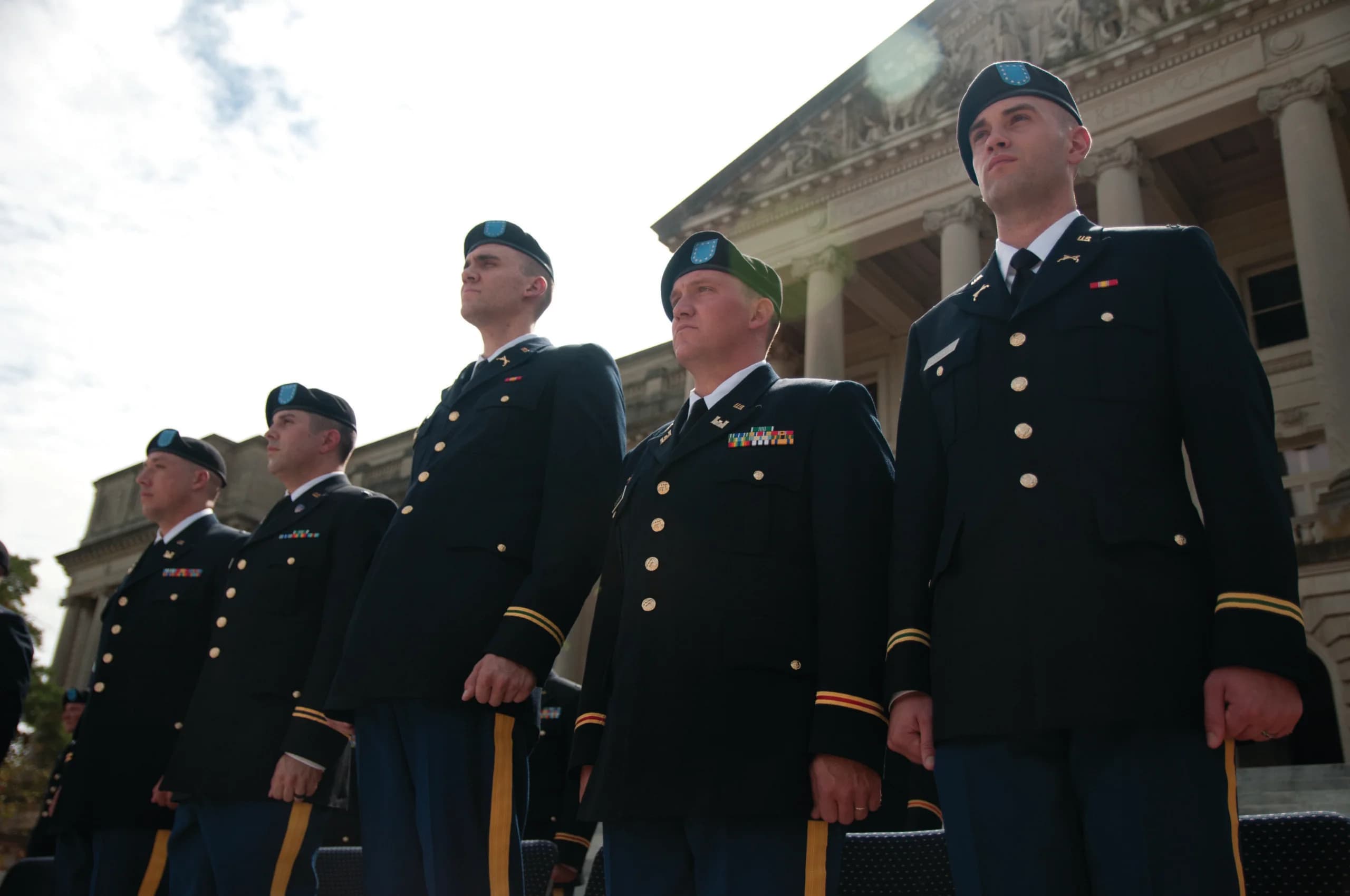The United States Army has a strict hierarchy of ranks defining a soldier’s position and responsibilities. It consists of enlisted, warrant, and commissioned officer ranks. The rank structure ensures that soldiers know their responsibilities and have clear lines of authority when carrying out military missions.
The ranks begin with the junior enlisted ranks, which are comprised of recruits, privates, and specialists. These soldiers are typically in training or on their initial assignment. The next level is non-commissioned officers, who are tasked with overseeing junior enlisted soldiers. The senior enlisted ranks are sergeants, master sergeants, and sergeant majors. The warrant officer ranks are technical and combat experts, while the commissioned officer ranks manage personnel, assign orders, and carry out operational missions.
Those who reach the rank of corporal (E-4) are considered junior non-commissioned officers. They are responsible for overseeing the soldiers in their charge and ensuring they are meeting their physical and professional requirements. They also supervise the platoon sergeants, who lead other junior enlisted soldiers. The rank of sergeant is the lowest of the senior enlisted ranks, and it’s commonly referred to as “first sergeant.” These NCOs monitor enlisted personnel and act as their advocates with the commanding officers. In battalion-sized units, they often serve in staff sections.
Sergeants first class and sergeant majors are subject matter experts who can take on leadership responsibilities in battalion-level commands of 300 to 1,000 soldiers. They can also be looked at for brigade and division-level staff positions. Those who reach the rank of lieutenant colonel are considered senior commissioned officers. They normally lead a battalion-sized unit and have a broad range of responsibilities, including supporting the commissioned officer ranks and the mission operations of their Army division.

What are the 13 ranks in the Army?
When it comes to ranks in the Army, there are 13 in total. The most important of these is the sergeant major of the Army (SMA), a rank held by only one enlisted soldier at a time, which represents the highest level of seniority in all enlisted ranks in the military. This position is chosen on a merit basis, and the SMA has an opportunity to address issues that affect the entire army on a high level, acting as the chief enlisted advisor for the chief of staff.
There are also field grade officers, which are those who serve at the brigade-level and higher, with responsibilities in various areas of personnel, logistics, and operations. The pay grade of FGOs is O-6. Field grade officers have a huge leadership role in the Army and are often highly respected by enlisted soldiers.
Sergeants First Class (SFC) are second in command of a platoon and are usually referred to as “platoon sergeants.” They have a lot of responsibility but also a great deal of authority. The pay grade of SFCs is E-7. Master Sergeants (MSGs) are subject matter experts and are responsible for training soldiers. They may also serve as policy development advisors and have various responsibilities at the battalion-level and higher levels.
Warrant Officers are tactical and technical experts, and they are very highly regarded by enlisted soldiers. They are generally viewed as the most trusted advisers. The rank of WO1 is the base-level, followed by WO2 and WO3. Warrant officers usually serve at the battalion level up to the echelons level.

Who is the Highest-paid Military Officer?
A general or admiral is the highest-paid military officer in the United States. They make an average of $197,000 per year, which is quite a lot when compared to the average civilian salary. However, it’s important to remember that the military offers many perks beyond just a paycheck. For example, most service members live in tax-free housing and receive allowances to pay for food. They also get medical and dental insurance, 30 days of vacation per year, and opportunities to continue their education.
Commissioned officers rank in a different tier than enlisted personnel. Those in pay grades of O-1 to O-3 are called company grade officers, while those in pay grades of O-4 to O-6 are known as field grade officers. Officers in the higher ranks are referred to as flag or general officers, and they command larger units than a company-grade officer does.
Depending on their branch of the military, a new officer’s base pay can vary considerably. Some of the major factors that go into determining their salary include their pay grade, the number of years they have served in the military, and any special or bonus payments. For example, an O-4 earns $7,891 a month. Those who have been in the military for more than 17 years and want to advance to the next level of pay, an O-5, will need to serve another six or seven years before they can do so.
Most military branches have a cap on how long a service member can spend in a certain rank before being forced to retire. This is referred to as the “up or out” policy. Generally, it takes about 12 years for a service member to reach the E-9 rank, which is senior master sergeant or first sergeant (Air Force), sergeant major (Army and Marine Corps), or chief petty officer 1st class or senior chief petty officer (Navy). Those who achieve this rank have anywhere from 15-30 years of experience, with most achieving this rank in less than 30 years.
